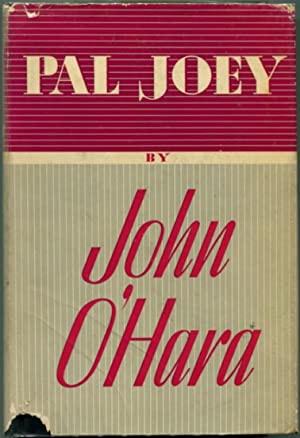Book Review by George S: Pal Joey began in the late 1930s as a series of short pieces in the New Yorker. Each of them was a letter from ‘your Pal Joey’ to a former associate, now a successful band-leader in New York. Joey is a singer (‘the poor man’s Crosby’ he calls himself at one point) who makes a precarious living in night-clubs (in Iowa first, then Chicago).. In the letters we hear Joey’s voice and read his mis-spellings; more importantly we get a sense of his self-deception as he tries to boost his self-image when describing his life to his more successful friend (to whom he owes money).
The stories are variations on atheme. Joey lets people down, and he lets them down. It’s a tough world. Most of the letters tell of an episode with a woman. Joey is a heel. He loves them and leaves them, but usually doesn’t leave them before they have lent him money, which he is unlikely ever to pay back. He gets into various complications with club owners, who mostly dislike him. He has a resilience which means he keeps on coming back from disasters – until the last letter, an unsent one from ‘Ex-Pal Joey’, in which he faces up, to an extent, to the emptiness of his life.

A good part of the interest of the stories is that Joey is an unreliable narrator; the reader has to untangle what is fact from the reat – the excuses, the self-justifications, the pipe-dreams. O’Hara distances the text by including Joey’s idiosyncratic grammar and his spelling errors. (In this respect, he’s maybe following the example of Gentlemen Prefer Blondes.
The stories made a hit when they appeared in the New Yorker, and O’Hara contacted theater people with the suggestion that they could be the basis of a play. Rogers and Hart were looking for material that would take them beyond the usual limits of musical comedy, and the stories were set in a milieu that they recognised, and Joey is challengingly different from the usual musical-comedy hero. O’Hara produced a script that owed little to the New Yorker stories, but used the character of Joey, and put him in a Chicago club, where he is involved with two girlfriends at once (one a rich woman who expects to control him. The show’s songs are Rogers and Hart at their best:‘I Could Write a Book’, ‘Bewitched, Bothered and Bewildered’ and ‘Zip!’, the song of the intellectual striptease artiste.
Rita Hayworth performs ‘Zip!’ in the 1957 film. The actual singing is by Jo Ann Greer.In 1940 Gene Kelly, in his first starring role, took the part of Joey. It received generally very good reviess, but some critics, like Brooks Atkinson, were bothered by the moral seediness of O’Hara’s hero. While praising the performances, and Rogers and Hart’s score, he concluded: ‘You cannot draw clean water fofrom a foul well’. Despite this, the show was a definite success, and a much bigger one when revived in 1952. A film was made in 1957, starring Frank Sinatra, which softened the seediness of the original, and stuffed the score with hits from earlier Rogers and Hart shows.
This video extract gives an idea of the background the first production of the show:
